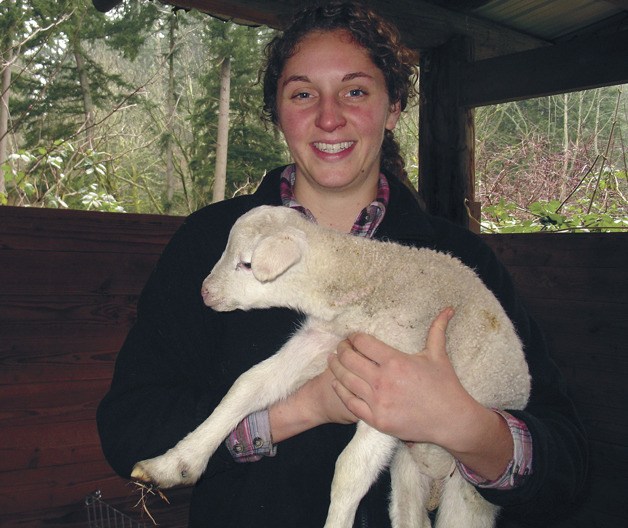Lambing season started in late January this year at Stan and Lynn Swanson’s Glendale Shepherd Farm. The Swansons raise a mixture of European East Friesian and Lacaune dairy sheep on their hilly acreage overlooking Saratoga Passage in Clinton.
As of Feb. 9, 19 lambs had been born to eight ewes, with 35 more sheep due to deliver in the next few weeks.
“Lambing season is my favorite time of year,” said Lynn Swanson. “But we do pull a lot of all-nighters.”
Family friend Whitney Heitzman, 21, is staying with the Swansons during lambing season this year. She takes her turn on “lamb watch,” which involves sleeping in a camper near the ewe barn and getting up several times a night to check the pregnant ewes.
“So far we haven’t had to assist at any of the births,” said Swanson. “But you have to be alert in case there’s a mix-up with twins or triplets, and be ready to help sort them out.”
Most of their ewes have delivered twins or triplets this year. One tiny triplet somehow wriggled his way under a feed trough and was discovered by Jet, the Swansons’ alert and experienced border collie.
The newborn lambs are allowed to nurse for a few days to get the immunity-rich colostrum or “first milk” their mothers produce. Then they are separated from their mothers and kept indoors together in the lamb barn, where they belly up to the “lamb bar,” a feeding device with multiple nipples. After eating, true to their ovine instinct, they snuggle together to keep warm.
The newborn lambs are still too small to go out to pasture. When born, the lambs weigh between 6 and 10 pounds — easy pickings for an eagle or coyote.
“The eagles could easily snatch one up,” said Swanson. “They’ve been strafing low over the pastures and barns since lambing season started.”
With the weaning of the lambs, the milking season begins. Last year, Lynn Swanson realized her dream of establishing a sheep milk cheese creamery. Her Island Brebis cheese is now sold at several Whidbey Island and Seattle locations.
Having grown up among dairy farmers, Swanson likes the seven months on, five months off schedule of running a sheep-milk dairy better.
In season, the Swansons’ son Erik herds six ewes at a time into the stanchions of the milking parlor. Milking and filtering the raw milk takes about 90 minutes morning and night. He transports the milk in a golf cart up the hill to the creamery, where Lynn makes the milk into cheese, a process that takes several days.
The finished cheese must age for a minimum of two months before it goes to market.
Some of this year’s new lambs will be raised for meat, and others will join the milking herd. The farm’s sheep are fed local hay from Coupeville, along with barley and pasture grass, and they live a good life under the Swansons’ conscientious stewardship.
By fall, the whole process starts again when the Swansons stop milking the pregnant ewes, take some time off, and wait for another lambing season — a sure sign of spring to come.


